Have you ever really loved something so much that when you introduce someone else to it, you want everything to be perfect so they’ll love it as much as you do?
Earlier this year, I studied Japanese in Japan for 3 months. After that, I planned this trip. In between the two trips, I did some temporary work. The head of a department where I worked for about 2 months (which I really enjoyed) came to Japan on business, and arranged to have a free day to explore Kyoto on Sunday.
I splurged on the Shinkansen from Nagoya to Kyoto. I took a Kodama that took 45 minutes. An ordinary train would take over 2 hours, with transfers at Ogaki and Maibara.
She very kindly arranged for us to have a taxi with a tour guide, so we were able to see much more of the city than we would have using public transportation. I had been expecting a lovely 70° F day. And then — a typhoon came. It didn’t hit Kyoto, but it sent lots of rain. We went anyway! Early on, we stopped at a convenience store and bought clear plastic raincoats. They came with large bags to put bags or purses in. They were a very good investment.
Unfortunately, the rain made photography difficult. When I was able to get my camera out without drenching it, it often focused on the drops of water on the lens and not what I was pointing at.
Our tour started at her hotel which was near Kyoto Station. (Helpful hint: If you are staying at the APA hotel in Kyoto, “the one by Kyoto Station” doesn’t tell anyone enough to be able to find you. There are at least 2 near the station.)
You certainly can’t see the best of Kyoto in a day, but our guide got a lot into eight hours and we didn’t even feel rushed.
Our first stop was the Arashiyama district.
The “Moon Crossing Bridge” (渡月橋, Togetsukyō): In a week or two, the fall colors here should be amazing. 

The bamboo forest is famously beautiful.
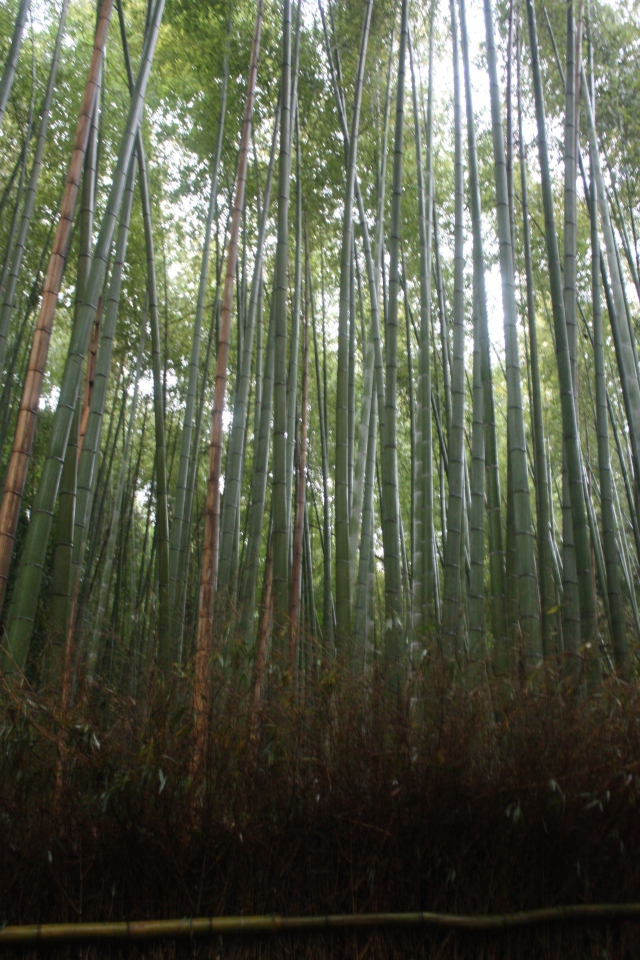

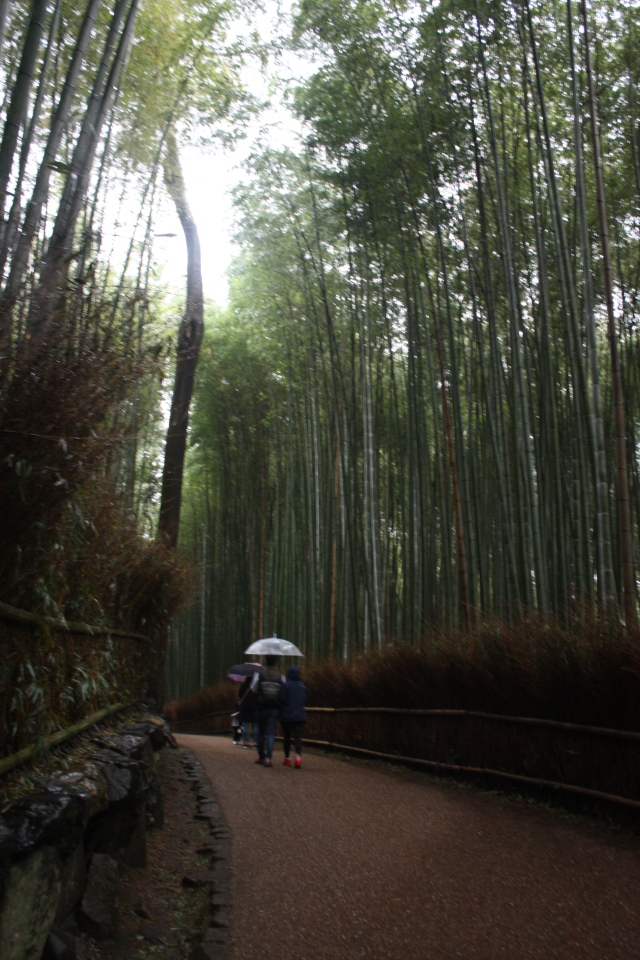
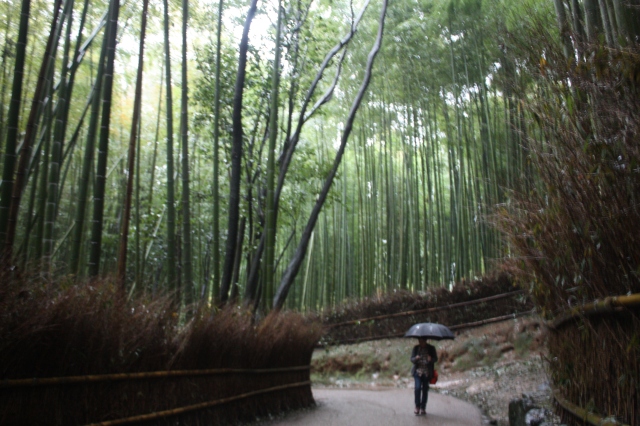

We walked along a river. There are monkeys on the forest on the far side. A few trees know autumn is coming.

On nice days, you can take a short train ride down there, and take a boat back. 
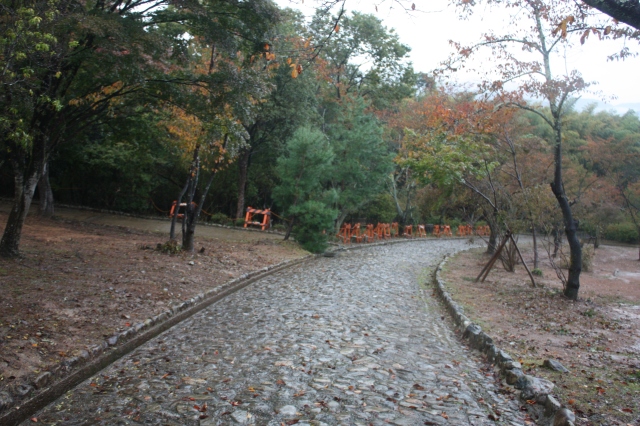


You may have heard of cat cafes in Japan. This was an owl cafe. Yeah, those are real owls. We did not go inside.

Daikakuji (大覚寺) is a Shingon temple. The suffix -ji or -tera/-dera (all written 寺) means “temple”. A building with a name ending in -ji, -tera, or -dera will be a Buddhist temple, not a Shinto shrine. Shingon is a sect of esoteric Buddhism. Of the major sects of Buddhism in Japan, it is the most like Tibetan Buddhism.
Here is the pond in the garden. It’s an artificial lake dating back to the ninth century.



I’ve seen octagon buildings at most Shingon temples that I’ve seen, if not all.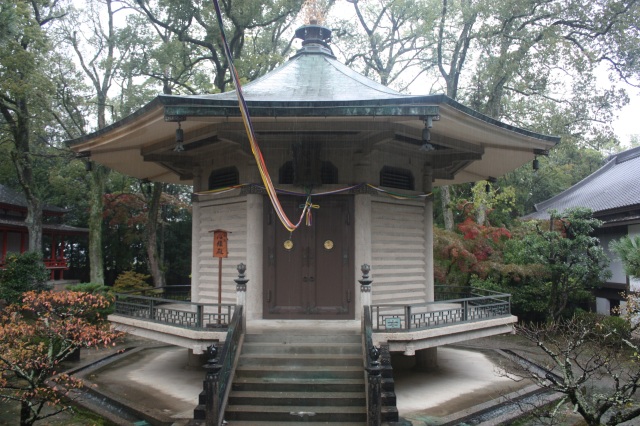









There’s a little fall color already.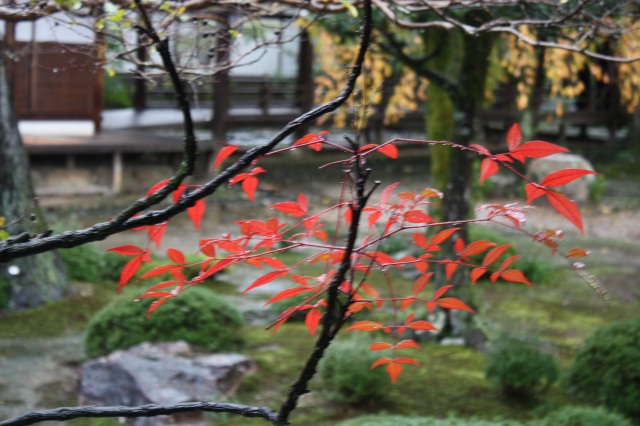
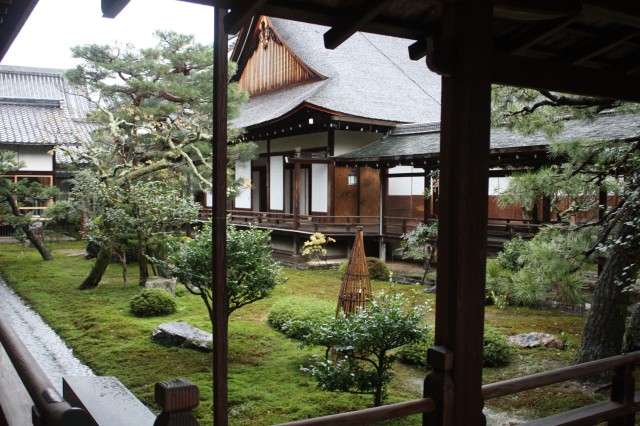




This gate is reserved for the Imperial family. The round gold designs on the gate are chrysanthemums, which are a symbol of the Emperor. Before becoming a temple, this was a palace. For a period of Japanese history, Emperors would retire and become monks. They would then rule as the power behind the throne. This was called cloistered rule and as you can see, it was not as austere as it sounds.

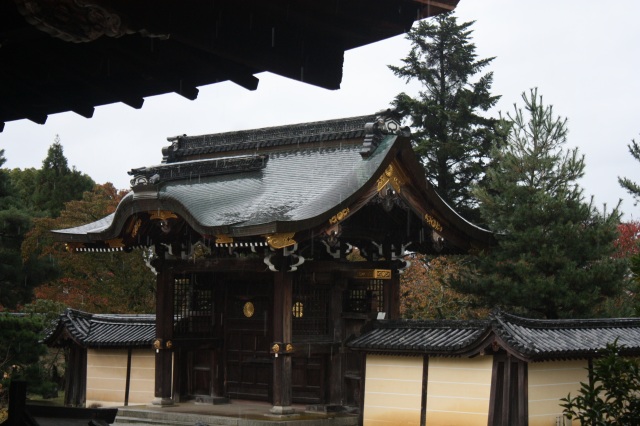
Inside the temple are 88 stations, each representing a temple on the 88 temple pilgrimage route on Shikoku island. By praying at each of these stations, the faithful can attain the same merit as they would by visiting the actual temples. The actual pilgrimage is about 1,200 km/750 miles long, and can take up to 60 days to walk, so this is quite efficient.
Walking that pilgrimage route is on my bucket list.


Ryoanji (龍安寺) is a Rinzai Zen temple with the most famous Zen rock garden in Japan. Imagine what being able to clear your mind by being able to gaze at this garden every day at lunchtime would do for your creativity and productivity at work. There are 15 stones, but they are cleverly placed so that no matter where you sit on the temple’s veranda, at least one is hiding behind another.

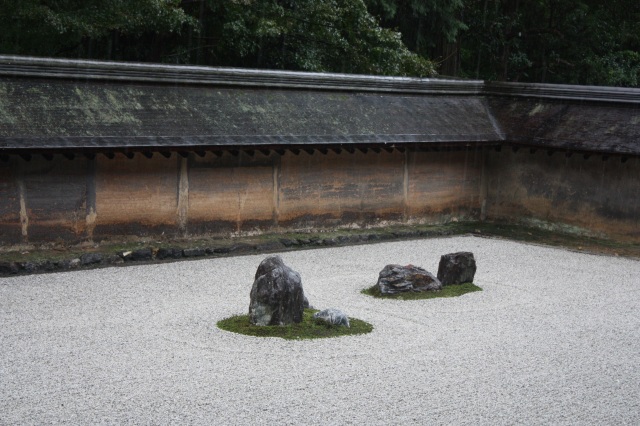

The Golden Pavilion (Kinkakuji – 金閣寺, officially named Rokuon-ji – 鹿苑寺) is one of the most famous buildings in Kyoto, if not Japan. It was originally a villa, but was converted into a Zen temple on the death of the Shogun Ashikaga Yoshimitsu (足利 義満), the third Ashikaga shogun. He had purchased it in 1397, it was burned down during the Onin Wars, and again in 1950 in a case of arson.

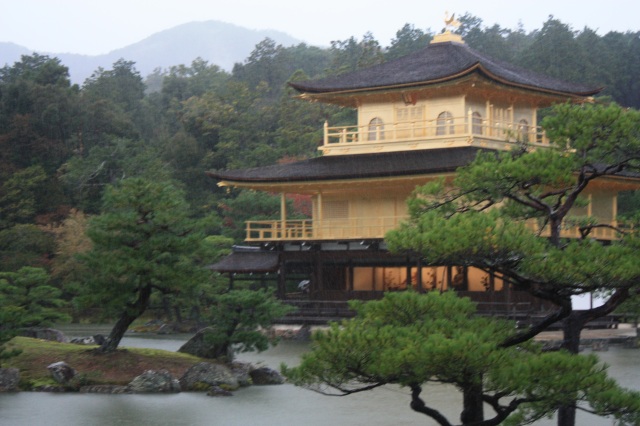
On clear days, the Pavilion reflects beautifully in this pond.


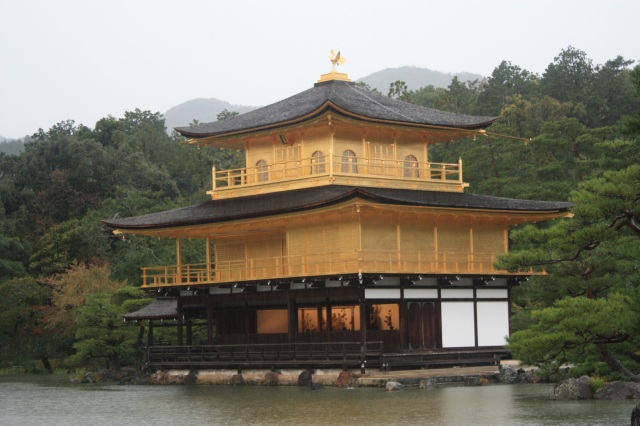
A little waterfall on the grounds…
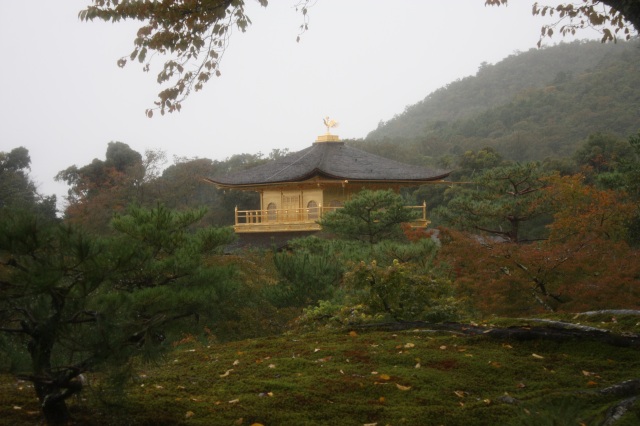


Nijō Castle (二条城 Nijō-jō) was built on Tokugawa Ieyasu’s orders, but completed in 1626 after Ieyasu had died. He united Japan under his rule in 1603, and the Tokugawas ruled Japan as shoguns, until 1867. The Emperor was the nominal ruler, but the real power was with the Tokugawas. They ruled from Edo, which became Tokyo, while the emperor remained in Kyoto. However, this was the Tokugawas’ castle.
Incidentally, Tokugawa Ieyasu was born in Okazaki, where I’m living. Have you read “Shogun” by James Clavell, or seen the miniseries? The daimyo in the story, Toranaga, is not-very-loosely based on Tokugawa Ieyasu.
Here’s a point about Japanese names: the family name goes first. Chinese and Korean names also follow this pattern. Kim Jong Un’s family name is Kim, Mao Tse Tung’s family name is Mao. For odd historical reasons, Japanese names are transposed when used in English. So, a man named Tanaka Daisuke (family name = Tanaka) in Japanese becomes Daisuke Tanaka in English.
Back to Nijo Castle! The palace built to impress upon visitors the wealth and power of the Tokugawas. It also has what are called nightingale floors. They purposely squeak — for the same reason any floor squeaks — so nobody can sneak down the hallways.
To enter these historic buildings we had to remove our shoes at the entrance, and leave our drippy umbrellas and raincoats as well.
Travel tip for Japan: bring shoes that are easy to remove and put back on, but are also comfortable to do a lot of walking in. Also, wear socks without holes.


Here you can really see the rain coming down.



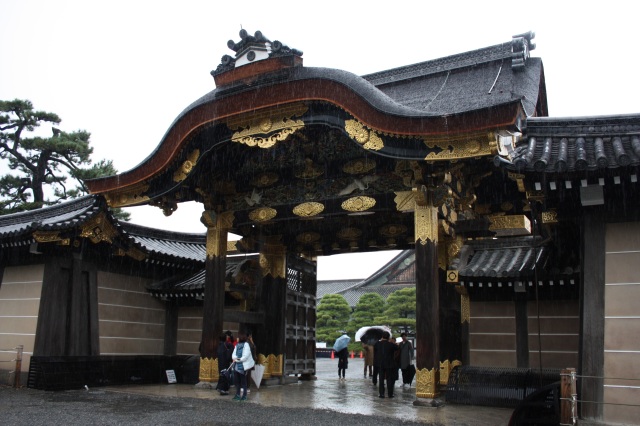
These carving resemble those at Nikko and Kunozan. Nikko and Kunozan are both Toshogu shrines — the enshrined deity is the spirit of Tokugawa Ieyasu. They were all built around the same time, too.
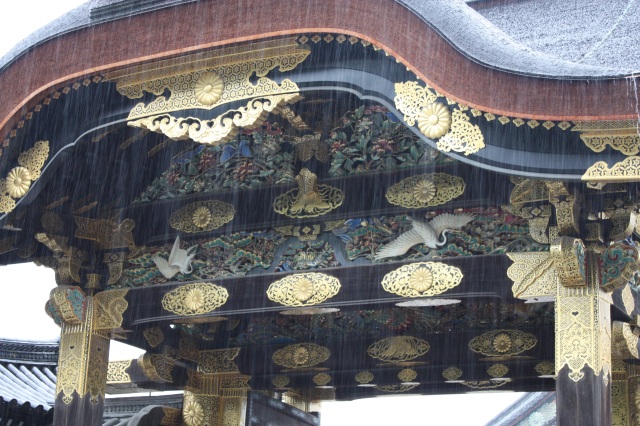
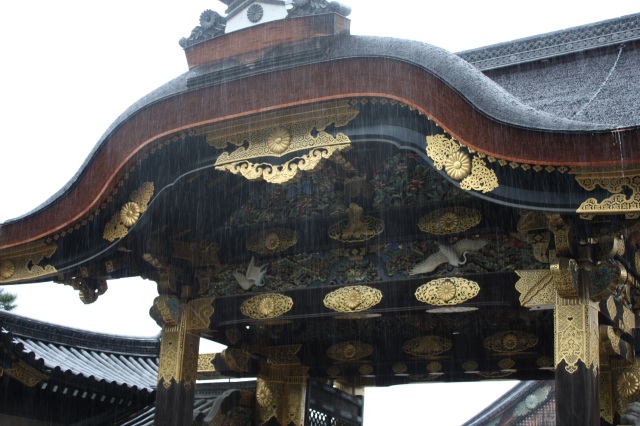
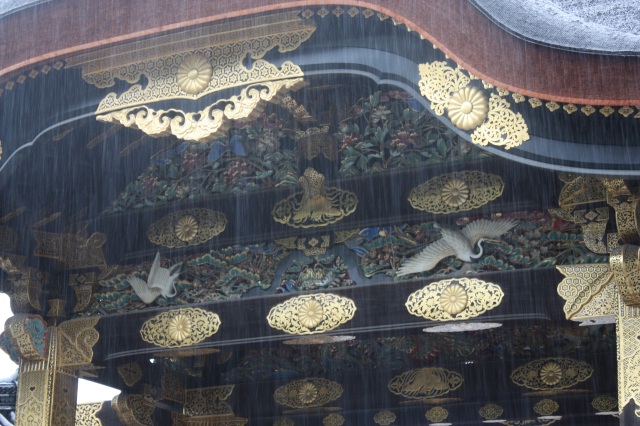
Finally, we went to Fushimi Inari Taisha (伏見稲荷大社). This is a shrine, not a temple. There are many Inari shrines in Japan. Inari is the patron of commerce and business, although orignally of rice. However, rice has played a big role in commerce (and most other things) in Japan, so the link is easy to see.
A shrine will usually have a torii gate, to separate the ordinary world outside the shrine from the sacred space within the shine grounds. They are often an orange-red vermilion color, as are many shrine buildings. Because shines and temples often share space, you may see a torii gate near a temple. But generally, a torii gate is a sign that you are at a shrine.
Inari shrines famously have lots of torii gates. They are usually donated by businesses, since Inari is the patron of business.
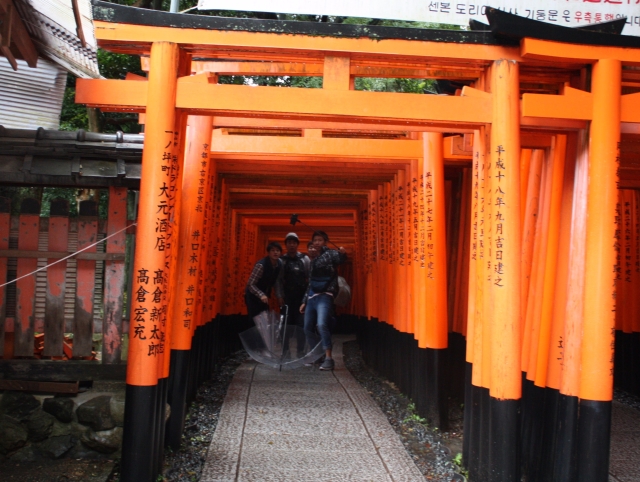
They also have statues of foxes, which are Inari’s messenger. Foxes also eat vermin, which is good for people growing rice, so there’s the link to rice. The following pictures are from my trip to this shrine last January when the weather was much better. Like many sites in Kyoto, Fushimi Inari shrine is worth more than one visit!
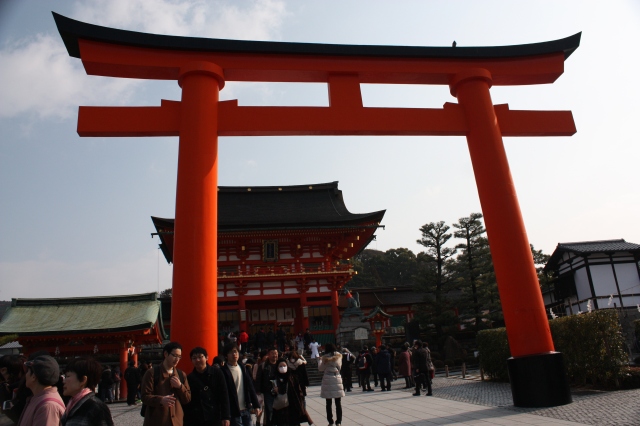

Here is one of the kitsune (fox) statues, with some rice.

There are lots of torii gates!

And our tour was done!
We were dropped off at Nishiki Market, which is a covered shopping arcade full of food! We sampled lots of pickles, then found a restaurant. Tempura over udon noodles, gyoza (pot stickers) and saké. I have no idea how they did it, but a tempura egg is amazing. Crunchy on the outside, soft poached egg on the inside.
After that, we wandered Shijo Dori (“4th Street”) to the Karasuma Station and returned to Kyoto station.
Kyoto is laid out on a grid because it was modeled after a Chinese city when it was founded. So, it actually has street names! Most Japanese cities do not have grid layouts, and street names are not part of the address. Addresses include things like neighborhood name, block number and building number. Back when cities had to be defended against marching armies, having streets that twisted and turned was good defense and most Japanese cities have stayed that way.
Because of the weather, many Shinkansens were delayed or canceled, including my ride home. Luckily, I was put on a Nozomi — the fastest class of Shinkansen. It made no stops between Kyoto and Nagoya, and I was able to take a special rapid train to Okazaki.
My feet were sore and tired, but the rest of me was very happy. Kyoto belongs on everyone’s bucket list.



No comments:
Post a Comment